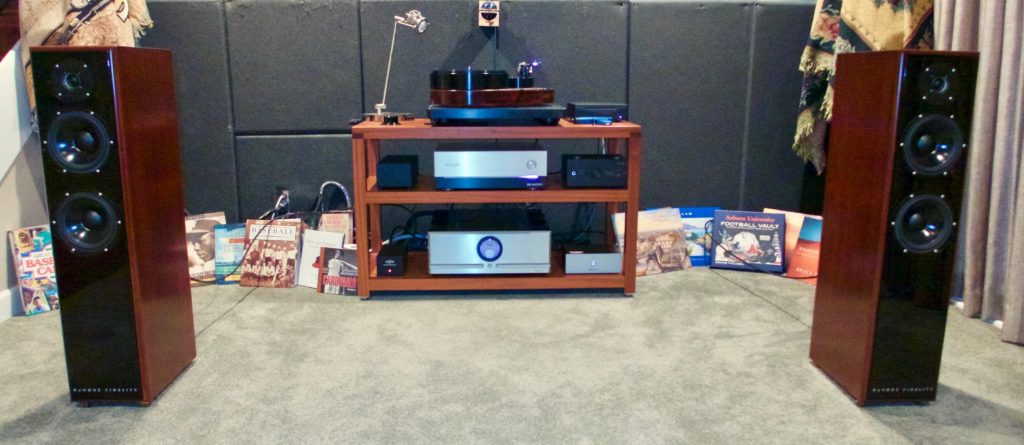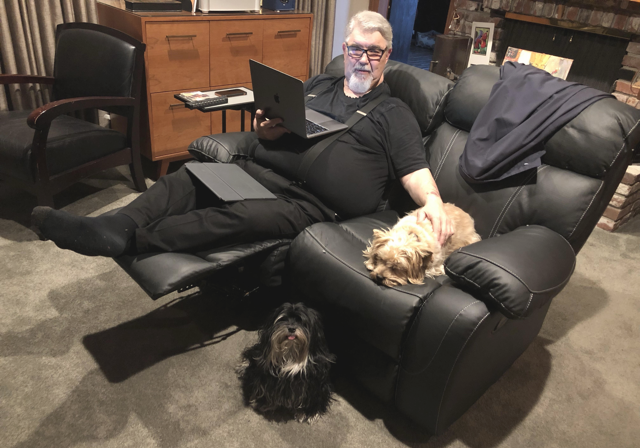
In our last newsletter, Becky said that it’s been a while since I’d written a thought piece because I haven’t been doing much thinking lately. Well, I was looking at The Absolute Sound’s website the other day and an article by speaker guru Robert Hartley caught my eye. It was an excerpt from the Fifth Edition of The Complete Guide to High-End Audio, copyright 1994–2019 by Robert Harley. For more information, you can visit hifibooks.com.
Hartley starts by saying that the single most important factor in getting the best sound from your system is properly positioning the loudspeakers and the listening chair. I pretty much agree with this statement, but I would like to add that it’s true only after you have properly matched your speakers with the right amplifier. Hartley’s article was about speaker placement though, so I thought I would share my opinions on this subject with you.
Your Listening Chair
First, not all speakers can be placed the same, but there is a best place for your listening chair. The place where you sit and listen is the one thing that is easy to change if you have a listening room. It can be more of a challenge if you have your system in the family room.
Your listening chair should be placed where the bass frequencies are the smoothest. You can hire someone to come over with professional equipment and find the spot, or you can you use several different albums with good bass and find the spot yourself if you trust your ears.

And, don’t be surprised that you need to make a few adjustments when you make any significant changes to your listening room. I just changed from a club chair to a reclining love seat so that Becky and I can listen to music together. Duke, our cairn terrier, has claimed the other half of the loveseat as his spot, and as you can see, he really gets into the music. Wullie, our son and daughter-in-law’s fur baby, is just jealous that he can’t jump up on the loveseat.
My Approach to Speaker Placement
First, let’s talk about placing traditional box speakers that are not designed for corner placement. I’ve tried Harry Pearson’s rule of thirds. I’ve also tried listening in an equilateral triangle and other approaches for finding the “best” spot. Starting with the listening portion removes some of the options that get in our way when setting up speakers.
In my highly irregularly spaced listening room, the area is 12.5 feet by 20 feet with an 8-foot ceiling. I start by placing my speakers 7 feet apart and 10 feet from the listening chair. I’m using a formula that is the distance the speakers are apart plus half again for the distance from the listening chair to the speakers. The distance from the speakers to the listener’s ears should be no more than this, and it could be up to two feet less than the formula. After this is set up, I tweak the speaker placement slightly for the smoothest bass and the most open sound.
By the way, I have found the distance the speakers are from each other is more important for smooth bass than their distance from the rear wall. The wider apart they are, the thinner the bass becomes and inversely, the bass becomes thicker the closer together they are. So you may get less thick bass if you move them further apart and cover the rear wall if you are using this approach that starts with the listening chair.
About Toe-in
Next, there’s the question of how much toe-in (setting the speakers at an angle toward the listener) is needed for the speakers? Toe-in affects the sound in three areas, the tonal balance, soundstage, and image focus. When it comes to toe-in, you need to know what your speaker’s designer recommends.
The last two speakers I have owned were both designed for no toe-in, but most speakers need some. When reviewing speakers, I start with the designer’s recommendation and work from there. I have found the less toe-in you can get away with the better the soundstage.
Personal Reflection
There is no doubt that very little is more important than speaker setup if you want to get the best sound from your system. So, please take the time to learn to do this. If you need more help, I recommend Jim Smith’s Get Better Sound book and especially the DVDs. You can find out more here.
Years ago I lived in Washington County, Alabama and the high-end audio store that was closest to me was Jim’s store in Birmingham, almost 3 hours away. As often as I could, I would go visit Jim and soak up his knowledge like a sponge. I have forever been grateful to him for this audio education.


Sorry to say, I am not a regular visitor to your site so I was somewhat taken aback to see you no longer have in house those big single driver speakers (can’t remember the name for the life of me but I’m sure you can sort it out) that you were so taken with. Nor do I recognize the current occupants. What motivated the changeover and will you identify the new kids on the block?